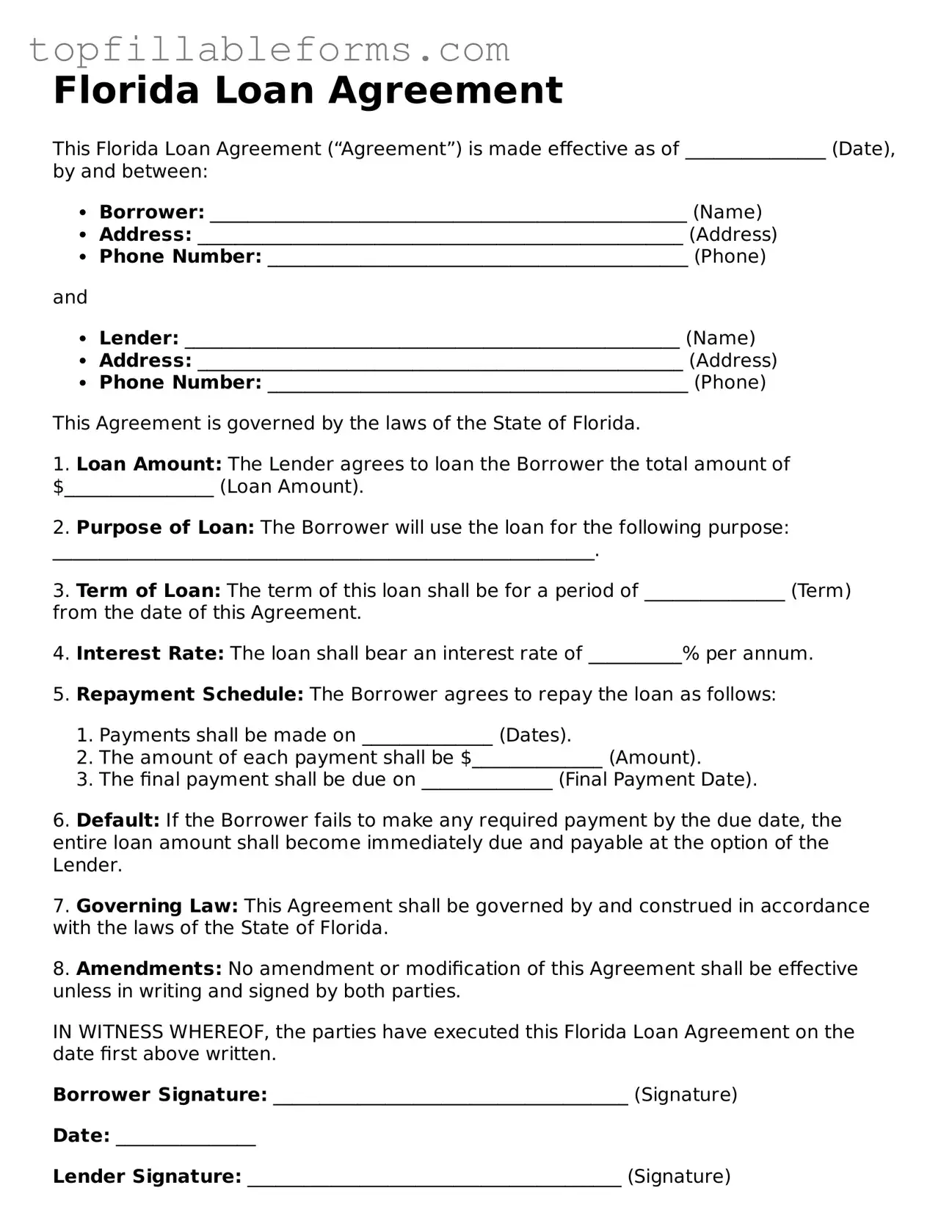Florida Loan Agreement
This Florida Loan Agreement (“Agreement”) is made effective as of _______________ (Date), by and between:
- Borrower: ___________________________________________________ (Name)
- Address: ____________________________________________________ (Address)
- Phone Number: _____________________________________________ (Phone)
and
- Lender: _____________________________________________________ (Name)
- Address: ____________________________________________________ (Address)
- Phone Number: _____________________________________________ (Phone)
This Agreement is governed by the laws of the State of Florida.
1. Loan Amount: The Lender agrees to loan the Borrower the total amount of $________________ (Loan Amount).
2. Purpose of Loan: The Borrower will use the loan for the following purpose: __________________________________________________________.
3. Term of Loan: The term of this loan shall be for a period of _______________ (Term) from the date of this Agreement.
4. Interest Rate: The loan shall bear an interest rate of __________% per annum.
5. Repayment Schedule: The Borrower agrees to repay the loan as follows:
- Payments shall be made on ______________ (Dates).
- The amount of each payment shall be $______________ (Amount).
- The final payment shall be due on ______________ (Final Payment Date).
6. Default: If the Borrower fails to make any required payment by the due date, the entire loan amount shall become immediately due and payable at the option of the Lender.
7. Governing Law: This Agreement shall be governed by and construed in accordance with the laws of the State of Florida.
8. Amendments: No amendment or modification of this Agreement shall be effective unless in writing and signed by both parties.
IN WITNESS WHEREOF, the parties have executed this Florida Loan Agreement on the date first above written.
Borrower Signature: ______________________________________ (Signature)
Date: _______________
Lender Signature: ________________________________________ (Signature)
Date: _______________
